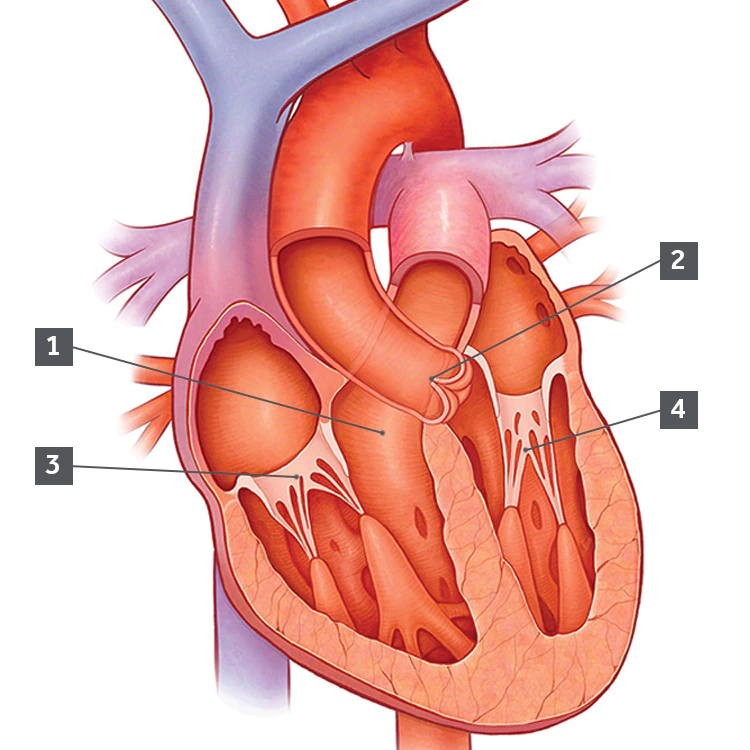A healthy heart beats around 100,000 times a day. The heart’s job is to supply the body with oxygen-rich blood.
The heart has four chambers. Blood is pumped through the four chambers with the help of four heart valves.
Heart valves open when the heart pumps to allow blood to flow. They close quickly between heartbeats to make sure blood does not flow backward.

Every year, about 5 million Americans learn they have heart valve disease,1 which disrupts the flow of blood through the heart. It can leave you short of breath and too weak for normal activities.
Heart valve disease can disturb the normal flow of blood through the heart. This can affect your overall health and keep you from enjoying the activities you love.
The aortic valve, pulmonary valve, mitral valve, and tricuspid valve can develop one or both of these problems:
The potential risks are shown in the order of severity, from most severe to least severe. This list does not include all risks. For more information regarding valve replacement surgery, talk to your doctor.
Every year, about 5 million Americans learn they have heart valve disease,1 which disrupts the flow of blood through the heart. It can leave you short of breath and too weak for normal activities.
Heart valve disease can disturb the normal flow of blood through the heart. This can affect your overall health and keep you from enjoying the activities you love.
The aortic valve, pulmonary valve, mitral valve, and tricuspid valve can develop one or both of these problems:
There are a number of symptoms that may indicate heart valve disease, including:
Symptoms can range from moderately severe to none at all and do not always indicate the seriousness of heart valve disease
There are risk factors you can control and risk factors you can't control. Factors you can control include infections and untreated strep throat, which can lead to rheumatic fever. Advancing age and congenital heart problems (present from birth) are factors beyond your control.
Your doctor can detect a heart valve problem and evaluate the nature of your valve damage by talking with you about your symptoms and performing a number of tests. These tests may include:
There are several options for treating heart valve disease.
Certain medications may ease some severe aortic stenosis symptoms.
A tiny balloon is inflated in the aortic valve to try and improve blood flow, but this treatment typically provides only temporary relief.
During an annuplasty procedure the surgeon reshapes your heart valve and may also attach the valve to its chords and add support to the valve annulus.
Open heart surgery is done to remove the diseased aortic valve and replace it with an artificial valve. Patients usually need to stay in the hospital for a week or more, before beginning a long period of recovery.
TAVR is less invasive than open heart surgery. Your doctor will make a small incision on your body. After, a thin, flexible tube is inserted into an artery to guide the artificial heart valve up to your heart to replace the diseased valve.
DISCLAIMER: The content of this document is meant for informational purposes only and is not intended to be a substitute for professional medical advice, diagnosis or treatment in any manner. Nothing herein should be construed as a promotion or solicitation for an indication for any product which is not authorized by the laws and regulations of your country of residence. Responses to a treatment may vary from patient to patient. Always consult your physician if you have any questions or concerns about your health.